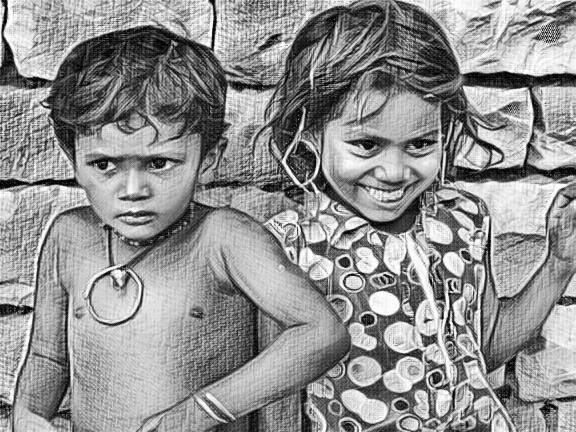People often discuss about the poor people and poverty. Who is really poor? The person who is worried about the next meal while eating is definitely a poor person. Unless one was poor and experienced poverty, it is not possible to understand what is poverty or to be poor. One may partly succeed to realise poverty by being sensitive, by keenly observing the poor, by listening to their narratives, and by identifying the concerns.
In one of the projects, we wanted to support the poorest of the poor. Therefore, to understand, I started searching for the poorest of the poor in the villages. Wanted to know who are they? How do they look? Where do they live in a village?
Usually, they don’t attend meetings or village gatherings, they are afraid to speak especially with the new people, and they don’t demand anything even if they speak. They also live in isolation or stay away from the main community. One day, when I was in the thirties, I still remember having seen one old and very poor lady in a village in Mahabubnagar district, Telangana state. She was the most miserable person in the village among the poor and also destitute. When she came out of her makeshift hut, I saw her frail body holding a stick in her hand, and all her hair was white. She lives on the food given by others through compassion. She could not speak much and also did not ask anything from me. Her picture still lingers in my mind whenever I think of the poor.
During an evaluation, I wanted to understand the food security of the Malto tribals. Visited some of the households to see the grains that they have stored in their home and how long they would last for consumption? What do they eat every day? Do they have kitchen gardens and domestic livestock to supplement their food needs? How natural resources are existing, which would support their livelihoods? Do they have alternative livelihood opportunities? I found that they store grains to last for a few months, as their production or income is seasonal and also at risk. They have limited access to the Minor Forest Produce or non-timber forest produce from the forests. The food security and livelihoods of the tribals were at risk. The carrying capacity of their immediate environment is also limited and lessening.
While working on biomass stoves - design and facilitation to the communities, I could visit the houses of many poor families in parts of India. It was a great opportunity to work for the poor and visit their houses.
All are equally born on earth, but the stakes on earth resources are different because some people claim more resources. Birth in space, time and the access to five capitals (Human, Social, Natural, Physical and Financial) makes a person poor or rich in this world - as a system was created by the humans called livelihoods.

Two Girls from a drought-prone area in Bundelkhand, Uttar Pradesh India.




